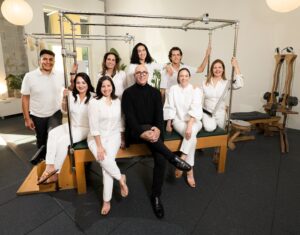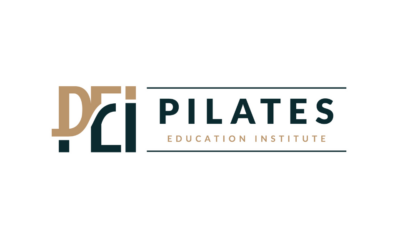Author: Brent Anderson PT, PhD, OCS, NCPT
As we celebrate our 30th anniversary of Polestar, I find myself reflecting on how we got here.

Polestar founder Brent Anderson and the headquarters team.
During my physical therapy studies at the University of California – San Francisco, I discovered Pilates at St. Francis Hospital. My first teachers were Patrice Whiteside and Elizabeth Larkam, and from the first day, I was so impressed with the equipment, the method, and its assistive nature that I could immediately see the applications in rehabilitation — and not just for dancers, as I had originally thought.
Upon graduating from physical therapy school, I moved to Sacramento to start my first job as a therapist. One day my boss asked me to try “the Pilates” with a patient suffering from chronic low back pain. She was not responding to traditional physical therapy, and he thought it might be worth trying this alternative method.
During our session, she had a profound experience and was able to make strides she had never made during traditional physical therapy. At the following session, she elaborated on this by telling me that the nature of the supportive movement allowed her access to some insight into an old trauma of hers. She was now no longer experiencing low back pain but felt she had made strides in processing these long-buried emotions.
This was a completely different outcome than what I was anticipating, and it really opened my eyes to the scope of Pilates in facilitating mindful, supportive movement.
It showed me that Pilates was much more than a series of exercises or a rehabilitation modality for dancers. It influenced the psychosocial aspects of health, which would eventually lead to my research which looked at how successful movement experiences in the Pilates environment positively influenced psycho-social impairments, physical limitations, and functional limitations often associated with chronic low back pain patients who otherwise were not responding to traditional pharmaceutical or passive intervention care.
We began to understand that belief, self-efficacy, and awareness were much more accurate in predicting who recovered from injuries than measures of strength, flexibility, or range of motion. This was the beginning of our idea that Pilates allows us to create the ideal environment to change people’s perceptions about what they can do and achieve. This was powerful.
In the early ’90s, Elizabeth and I were inspired to create a Pilates teacher training program that focused on the individual and emphasized the restoration of function and enhancing performance. During this time, we worked closely with Ken Endelman from Balanced Body to bring Pilates to more people and collaborated on equipment ideas to make the method more applicable to rehabilitation. Everything we developed was supported with the latest evidence-based practices and science, from movement science to human behavior. We developed outcome measures with student competencies, a screening for evaluation of Pilates clients, and pedagogy that optimized learning how to do and teach Pilates.
Today I find myself with the same enthusiasm I had 30 years ago. I am privileged to be surrounded by the best teachers, students, and innovators in movement from around the world. Looking back and remembering what we had to work with and seeing the impact Pilates had in the lives of those we helped move better, makes me feel humbled and proud of the journey we’ve shared together.



